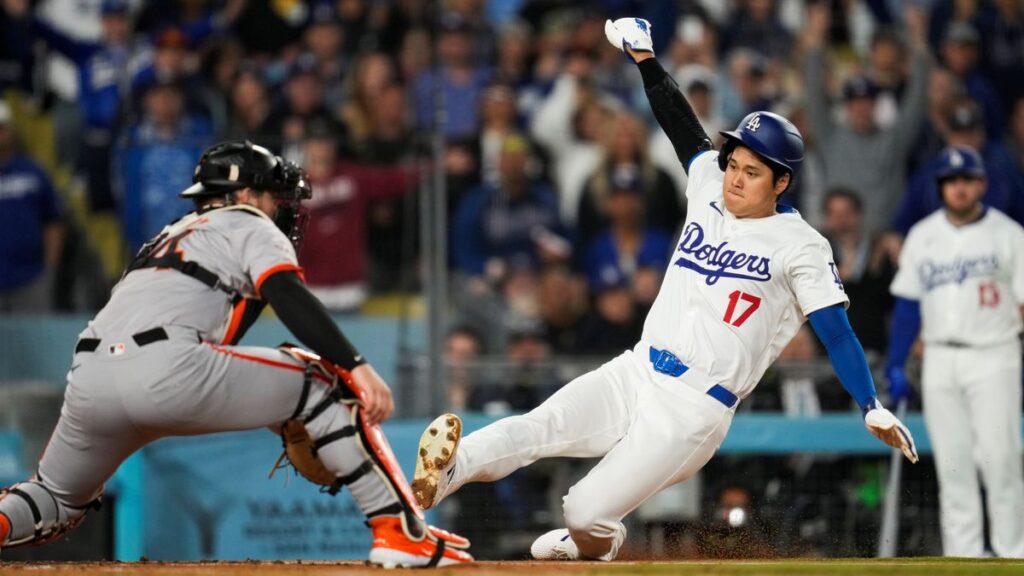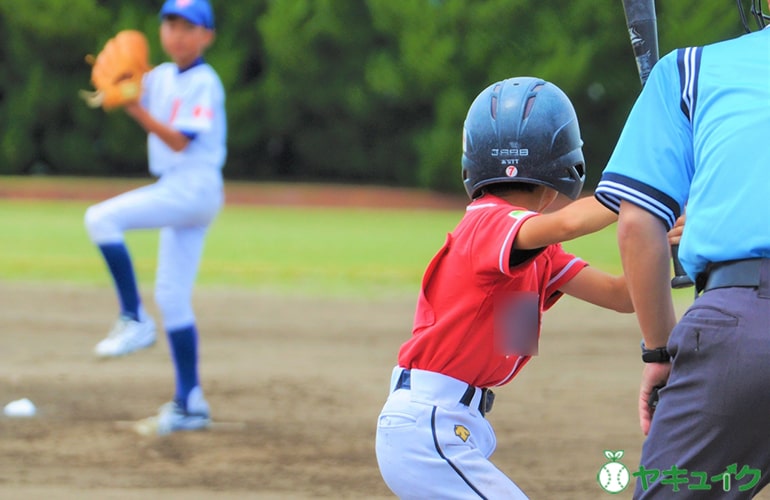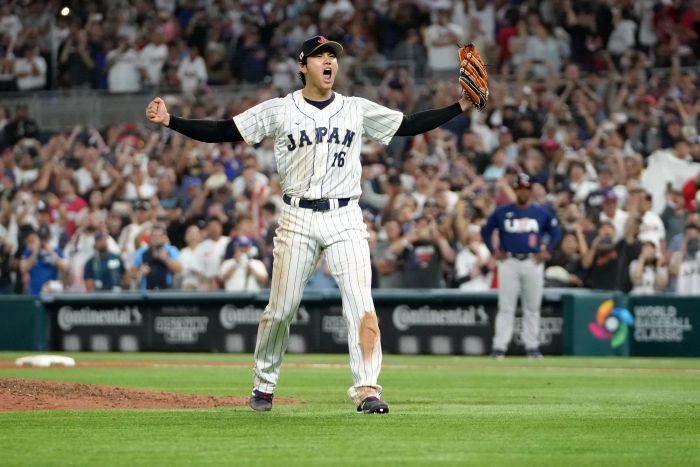
In baseball, a batter’s batting stance is a crucial factor that directly impacts his or her success at hitting.
The batting stance is the foundation that determines whether a batter can see the ball well and swing smoothly.
In this article, we will explain in detail everything from the basics of batting stance to specific types of stances, examples of professional players, common mistakes and how to correct them, and training methods.
目次
The importance of the batter’s stance
Batting stance is a very important element in baseball.
How a batter stands directly affects the outcome of the hit.
Mastering the proper batting stance is the foundation for improving swing consistency, power generation and ball handling.
Why is batting stance important?
The importance of batting stance stems from many factors.
First of all, the batting stance is essential to keeping the batter on balance.
A proper stance keeps your body balanced and allows for smooth movement during your swing.
This will result in more consistent swings and more accurate hits.
The batting stance is also the source of a batter’s power.
By taking the correct stance, you can use the power of your entire body effectively and transfer maximum force to the ball.
In particular, if the position of your feet and the angle of your knees are correct, the transfer of power during your swing will be smoother, allowing you to hit the ball farther.
Additionally, your batting stance also impacts your visibility of the ball.
The proper stance allows the batter to see the pitcher’s pitch better and makes it easier to time it.
In particular, if your head and eyes are in the correct position, you will be able to track the ball’s trajectory more accurately, improving the accuracy of your shot.
Basic principles of batting stance
Understanding the basic principles of batting stance is essential to achieving an effective swing.
Here are the key elements to developing a proper batting stance.
First, your foot position: your feet should be slightly wider than shoulder width apart, with your weight evenly distributed between your feet.
This creates a balanced and stable base for smooth movement as you swing.
Also, by pointing your toes slightly inward, you will be able to rotate your body more naturally.
Next is the angle of your knees. Bend your knees slightly to keep them flexible.
This allows your body to move up and down more smoothly, making it easier to use your whole body when swinging.
Bending your knees too much will cramp your swing and disperse your force, so it’s important to maintain a moderate angle.
Hip position is also an important factor: keep your hips level and facing forward toward the pitcher.
This stabilizes your body’s axis of rotation and eliminates unnecessary movement during your swing.
If your hips are in a stable position, you will be able to use the power of your entire body more efficiently, resulting in a more powerful swing.
Upper body posture is also important. Lean your torso slightly forward and keep your whole body in a natural line.
This makes it easier to track the ball’s trajectory and improves hitting accuracy.
It also stabilizes your head position and makes it easier to see the pitcher with both eyes, reducing the number of missed balls.
Finally, hand position: your hands should be at shoulder height with the bat slightly back.
This will help stabilize your swing path and make it easier to make accurate contact with the ball.
A stable hand position will lead to a more consistent swing and improved batting accuracy.
Understanding the basic principles of batting stance and developing a proper stance will dramatically improve your hitting power.
Incorporate these principles into your daily practice and find the batting stance that works best for you.

Basic batting stance types
Batting stance in baseball is an important factor that greatly affects a batter’s performance.
Choosing the right stance will improve your balance, power, visibility and improve the accuracy of your strikes.
Here we will take a closer look at the basic types of batting stances and the benefits of each.
Square Stance
The square stance is the most common stance in which the batter’s feet are positioned parallel to home plate.
This stance offers a balanced approach and is suitable for beginners.
The benefits of a square stance include:
- Good balance : With both feet parallel, your body is more balanced, improving the stability of your swing.
- Visibility : You can see the pitcher throwing the ball from the front, so you can get a good grasp of the ball’s movement.
- Flexibility : The square stance is a fundamental setup that can easily be tweaked by individual batters to suit their own style.
Open Stance
In the open stance, the front foot is positioned away from home plate and the batter’s body is open to the pitcher.
This stance is intended to improve ball visibility.
The main advantages of an open stance are:
- Improved visibility : With your body open, you can see the pitcher’s delivery better, especially on breaking balls.
- Dealing with inside pitches : This is advantageous for hitters who pull inside pitches, making it easier for them to time their swing.
On the other hand, an open stance also has the following disadvantages:
- Difficulty dealing with outside pitches : Because your body is open, it is difficult to deal with outside pitches.
Closed Stance
In the closed stance, the front foot is closer to home plate and the batter’s body is closed to the pitcher.
This stance is intended to improve response to outside pitches.
The main advantages of a closed stance are:
- Handling outside pitches : With his front foot closer to the plate, he has an easier time hitting back outside pitches.
- Increased Power : Your body rotates more smoothly, allowing you to transfer more power into your swing.
However, a closed stance also has the following disadvantages:
- Reduced visibility : Because your body is closed, it’s harder to see the pitcher throwing the ball, making it harder to react to inside pitches in particular.
summary
Each batting stance has its own advantages and disadvantages, so it is important to choose one based on the batter’s style and preferences.
To find the right stance for you, you will need to try each stance to find the one that fits you best.
Through daily practice, you can master the fundamentals of your batting stance and perform at your best in the game.

Building a proper batting stance
The batting stance is an important foundation for hitting a baseball.
By developing a proper stance, hitters can perform more consistently and improve the efficiency of their swing.
Here we will explain in detail the position and balance of your feet, the angle and posture of your knees, the position of your hands and how to hold the bat.
Foot position and balance
Foot position and balance are fundamental to your batting stance.
It’s important to stand with your feet slightly wider than shoulder width apart to create a stable base.
If your feet are too narrow, you will easily lose your balance, and if they are too wide, your movement will be restricted, so it is important to maintain a moderate distance.
Foot position points:
- Wider than shoulder width: Place your feet a little wider than shoulder width apart to increase stability.
- Gravity location: Keep your weight on the balls of your feet, ready for immediate reaction.
- Toe direction: Pointing your toes slightly toward home plate will help smooth the rotation of your entire body.
Proper foot positioning helps you maintain balance during your swing, allowing for smooth movement.
In addition, the stable center of gravity allows for a powerful swing.
Knee angle and posture
Knee angle and posture are also very important in your batting stance.
Proper knee bending improves flexibility and stability, making your swing more efficient.
Knee angle and posture points:
- Bend slightly: Bend your knees slightly and keep your body flexible. This will allow your body to move up and down smoothly and transfer force effectively.
- Lean your upper body forward: Lean your upper body slightly forward and stabilize your hips. This stabilizes the trajectory of the bat and allows you to catch the ball firmly.
- Head position: Keep your head stable and with both eyes on the pitcher, which makes it easier to follow the ball’s trajectory and improve your hitting accuracy.
Correct knee angle and posture will improve the movement of your entire body and reduce unnecessary movement.
This will help you maintain swing consistency and make for a more effective hit.
Hand position and bat grip
Hand position and how you hold the bat greatly affect the accuracy and power of your swing.
Learning the correct hand position and grip on the bat will improve the consistency and power of your swing.
Hand position and bat grip tips:
- Shoulder height: Your hands should be at shoulder height and the bat should be diagonally backwards. This will help stabilize your swing path.
- Elbow position: Your back elbow should be in line with your shoulder to maximize the power of your swing.
- Grip: The fingers of the bat hand should be positioned so that the top hand and bottom hand are touching each other. The knuckles should be in a straight line to maintain fluidity in the swing.
Maintaining proper hand position and bat grip will improve your swing consistency and give you more power when striking the ball.
A good grip on the bat also reduces hand fatigue and makes it easier to endure long batting sessions.
By adhering to these basic principles, you can develop an effective batting stance and maximise your performance in the match.
Through daily practice, you can ensure that you master these elements and step up to the plate with confidence.

Advantages and disadvantages of each stance
Batting stance is a crucial factor that has a major impact on a batter’s performance.
Each stance has its own advantages and disadvantages, and it is up to the batter to choose the appropriate one depending on their style and the situation.
Here we will take a closer look at the advantages and disadvantages of square stance, open stance, and closed stance.
The benefits of a square stance
The square stance is the most basic stance in which both feet are positioned parallel to home plate.
Many hitters adopt this stance, which offers the following advantages:
advantage:
- Balanced : A square stance helps keep your body balanced and provides stability throughout your swing, which results in a more consistent swing.
- Visibility : You can see the pitcher throwing the ball from the front, making it easier to follow the ball’s trajectory and improving your hitting accuracy.
- Flexibility : A square stance allows a hitter to time his swing better and adapt to a variety of pitches.
- Basic Stance : The square stance is easy for beginners to understand and is a good starting point for building basic skills.
This stance is ideal for hitters who value balance and visibility and is effective in many situations.
Advantages and Disadvantages of an Open Stance
In an open stance, the front foot is positioned away from home plate and the body is open to the pitcher.
This stance has the following advantages and disadvantages:
advantage:
- Improved visibility : With your body open, you can see the pitcher’s delivery better, especially on breaking balls, allowing you to see the ball’s movement sooner.
- For inside pitches : This stance is very effective for hitters who hit inside pitches. It makes it easier to time your swing and allows for powerful hits.
Disadvantage:
- Weakness to outside pitches : Your open body can make it difficult to react to outside pitches. This can make it difficult to hit balls on the outside corners.
- Restricting body rotation : An open stance can restrict body rotation, which can reduce the power of your swing.
The open stance is suitable for hitters who value visibility and being able to respond to inside pitches, but caution is required if the ability to respond to outside pitches is required.
Advantages and disadvantages of a closed stance
In a closed stance, your front foot is closer to home plate and your body is closed to the pitcher.
This stance has the following advantages and disadvantages:
advantage:
- Handling outside pitches : With your front foot closer to the plate, it’s easier to hit back outside pitches. This gives you better control over balls on the outside corners.
- Increased Power : Your body will rotate more smoothly, allowing you to transfer more power into your swing, especially on the outside of the ball.
Disadvantage:
- Reduced visibility : Because your body is closed, it can be hard to see the pitcher throwing the ball, which can make it harder to react to inside pitches.
- Difficulty responding to inside pitches : With a closed stance, you tend to be slow to respond to inside pitches, making it difficult to get the timing of your swing right.
The closed stance is good for hitters who are strong against outside pitches and who emphasize power hitting, but care must be taken when dealing with inside pitches.
Understanding the advantages and disadvantages of each stance and choosing the one that works best for you is the first step to hitting success.
Through daily practice, try different stances and find what fits you best.
Choosing the right stance will improve your performance and maximise your success in the match.

Examples of professional batting stances
The batting stances of professional baseball players vary widely depending on each player’s batting style, body type, and way of exerting force.
These stances are chosen to help hitters maximize their strengths.
Here we will introduce the batting stances of famous players and explain in detail the characteristics of each stance and how to adapt it.
Introducing the stances of famous players
1. Ichiro (Ichiro Suzuki)
Ichiro’s batting stance is very unique and reflects his stability and flexibility. He adopts an open stance, with his front foot slightly back, giving him a better view of the pitcher’s pitch. Ichiro’s stance supports his success as a hit maker.
- Pros : Good visibility and quick reactions. Flexible and maneuverable on the ball.
- Disadvantages : Not suitable for striking that requires power.
2. Barry Bonds
Barry Bonds used a closed stance to create his powerful hitting ability. By keeping his front foot closer to home plate, he was able to better counter outside pitches. Bonds’ stance was a key factor in his home run record.
- Pros : Good on outside pitches and maximizes power.
- Cons : Reduced visibility, making it difficult to react to inside pitches.
3. Derek Jeter
Derek Jeter used a very basic square stance, with his feet shoulder-width apart and a well-balanced body position that allowed him to hit the ball with consistency. Jeter’s stance helped him achieve consistent hitting performance.
- Pros : Well balanced and easy to handle on all pitches.
- Cons : Lack of expertise for a particular pitch.
How to choose and adapt your stance
When professional players choose their batting stance, it is important to choose the appropriate stance based on their batting style, body type, and preferred pitch.
Below we will explain how to choose a stance and how to adapt to it.
1. Understand your strengths
First, it is important to understand your own batting style and strengths. For example, if you are a hitter who is good against inside pitches, an open stance is appropriate. If you are a hitter who is good against outside pitches, you should try a closed stance.
2. Use feedback from your coach and teammates
Professional players actively use feedback from their coaches and teammates. They review their swing on video, find areas for improvement, and fine-tune their stance. By practicing based on that feedback, they can find the optimal stance.
3. Be flexible with your stance
It is also important to be flexible in changing your stance depending on the game situation and the pitcher you are facing. If you are not good at hitting a particular pitch, you can improve your batting accuracy by trying out a stance that is easier to deal with that pitch.
4. Continuous practice
After choosing your stance, you need to practice continuously. Checking your stance in daily practice and maintaining consistency in your swing will improve your performance in the game. Professional players are always reviewing their stance and making an effort to optimize it.
A professional player’s batting stance reflects the individual personality and strengths of each player.
Finding the stance that works best for you comes down to understanding your hitting style, using feedback from your coach and teammates, and consistent practice.
By incorporating these elements, you too can develop an effective batting stance just like a professional player.

Common batting stance mistakes and how to correct them
Your batting stance is the foundation for a precise swing and consistent hitting.
However, there are some mistakes that many hitters make unknowingly.
Here we’ll take a closer look at some common mistakes you may make regarding center of gravity position, hand and arm position, and foot position, and how to correct them.
Mistakes regarding the position of the center of gravity
Mistakes:
If your centre of gravity is not in the right position, you will be more likely to lose your balance and your swing will be inconsistent. Common mistakes include having your centre of gravity too far over your back foot or too far over your front foot.
How to fix:
-
If your center of gravity is too far to your back foot:
If your center of gravity is too far to your back foot, your swing will start late and you will not be able to exert enough power. In this case, review your posture in the batter’s box and adjust it so that your center of gravity is in the center of your body. During practice, it is effective to use a mirror to check your posture and be aware of the appropriate center of gravity position. -
If your weight is too far on your front foot:
If your weight is too far on your front foot, you will swing too early and it will be difficult to hit the ball accurately. In this case, it is important to bring your weight back to the center of your body. To keep your weight even, incorporate balance exercises while standing still and develop a sense of your center of gravity being in the center.
Hand and arm position errors
Mistakes:
Poor hand and arm positioning reduces the power and accuracy of your swing. Common mistakes include hands that are too high or too low above the shoulders and improper elbow position.
How to fix:
-
Hand position:
Your hands should be at shoulder height, with your elbows in line with your shoulders. This will stabilize the swing path and make it easier to transfer power to the bat. When practicing, check the position of your hands and elbows in front of a mirror and be aware of the correct position. -
Elbow position:
If your elbow is too far away from your body, the power of your swing will be dispersed. Keep your elbow close to your body so that the power of your whole body is transferred to the bat when you swing. It is a good idea to incorporate drills to develop the feeling of pulling your elbow closer to your body when swinging the bat.
Foot position error
Mistakes:
Poor foot positioning can cause you to lose balance and make your swing unstable. Standing too wide or too narrow is a common mistake.
How to fix:
-
Feet too wide:
Feet that are too wide will restrict your movement and make your swing less flexible. Keep your feet a little wider than shoulder width apart to help you maintain balance. It’s a good idea to take a video of yourself and review your form to determine the correct foot width. -
If your feet are too narrow:
If your feet are too narrow, you will be unbalanced and lose power in your swing. Stand a little wider than shoulder width apart to create a stable base. It is important to incorporate drills to adjust your foot position and train your body to remember the correct stance.
Correcting these mistakes will stabilize your batting stance and improve the power and accuracy of your swing.
By regularly checking your form and making any necessary adjustments, you can maintain an optimal batting stance and maximise your performance in matches.

Batting Stance Training and Practice
Batting stance training is essential for achieving a consistent swing and powerful hits.
With the right training and practice techniques, you can improve your stance stability, maximise the power of your swing and improve your practical hitting ability.
Here we’ll go into detail on drills to improve stance stability, practice techniques to maximize power, and practical exercises in the batting cage.
Stance Stability Drills
Balance Board Training: Using a balance board can help you improve your foot position and balance. By standing on the balance board and assuming a batting stance, you can improve your stability while making sure your center of gravity is properly positioned.
Mirror Training: Checking your batting stance in front of a mirror helps you visually check your form and correct any imperfections. Use the mirror to check your foot position, knee angle, hand and bat position, and train your body to remember the correct stance.
Single-leg stance drill: Practice standing on one leg and taking a batting stance. This strengthens the balance of your center of gravity and improves the stability of your stance. Balancing on one leg also develops core strength.
How to practice to maximize your power
Medicine Ball Throws: Medicine ball throwing drills improve the power needed for your swing. Throwing laterally with a medicine ball develops core rotation and arm strength, increasing the power of your swing.
Resistance band training: Training with resistance bands is a great way to develop power in your swing. Swinging with bands helps develop the strength and speed required for your swing, and is especially good for strengthening your core and shoulders.
Hip Turn Drill: The hip turn drill is a drill to effectively transfer the power of your lower body into your swing. By repeatedly rotating your hips while keeping your feet stationary, you can maximize the power of your swing. By rotating your hips more smoothly and powerfully, you can increase the distance of your hits.
Batting cage practice
Live Pitching Practice: Live pitching practice in a batting cage is essential for developing hands-on hitting skills.
By hitting balls thrown by a pitching machine or a coach, you can practice your swing in conditions that are close to those of a real game.
By adapting to different speeds and types of balls, you can improve your practical skills.
Tee batting: Tee batting is an important practice method for checking and improving the basics of swing. By hitting a ball placed on a tee, you can check and correct the trajectory of your swing and how you transfer your power. It is especially effective for beginners and those who want to check their form.
Simulation Practice: In a batting cage, we practice hitting in game situations, such as with runners on base or in certain count situations, to improve a batter’s judgment and adaptability.
By incorporating these training and practice methods, you can improve the stability of your batting stance, maximize the power of your swing, and improve your practical hitting ability.
Incorporate these drills into your daily practice to optimize your stance and improve your performance on the court.




